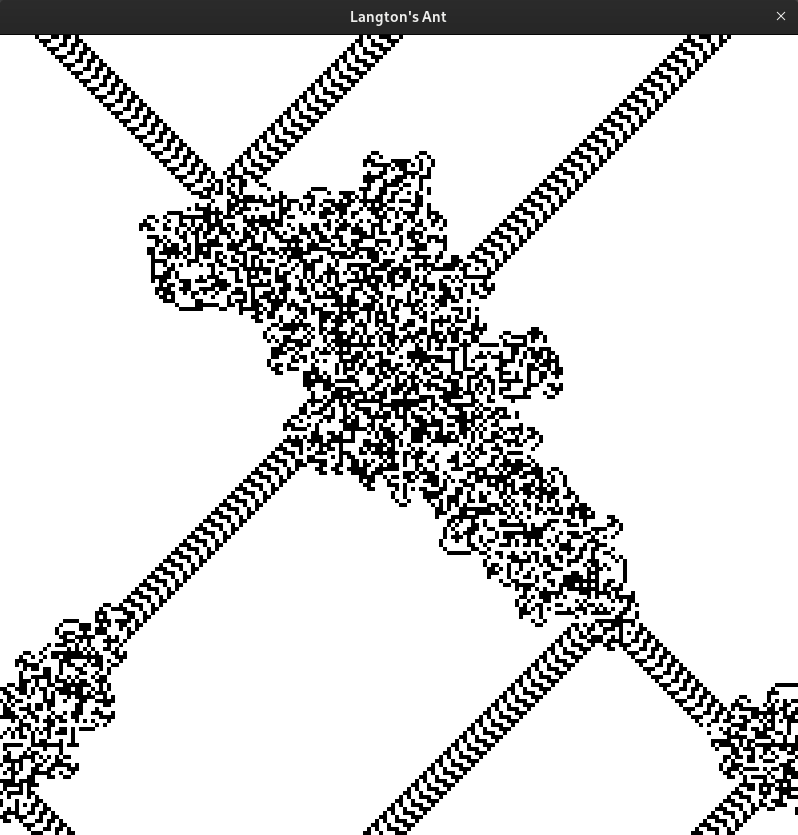GPT-4

Chat GPT, by Open AI, is all the buzz these days. From transforming the way we communicate to revolutionizing industries, this groundbreaking technology is taking the world by storm. But what exactly is Chat GPT, and how is it changing the way we interact with machines? In this blog post, we'll dive into the world of Chat GPT, explore its capabilities, and examine its potential impact on various industries.
Caveat emptor -
Before we go too much further, all text on this page not in italics was written by Chat GPT-4. Chat GPT-4 also wrote the Python code at the bottom that generated the Langton's ant picture above.
What is Chat GPT?
Chat GPT (short for Chat Generative Pre-trained Transformer) is an advanced language model developed by OpenAI. Based on the GPT architecture, it's designed to generate human-like text based on given prompts. The model has been trained on vast amounts of data, enabling it to understand and generate text in a way that mimics human conversation.
Why is Chat GPT so groundbreaking?
Traditional AI language models have struggled to generate coherent and contextually relevant text, often producing disjointed and nonsensical responses. With the introduction of Chat GPT, this is no longer the case. The model's ability to generate human-like responses has made it a powerful tool for various applications, from customer service to content creation.
Applications of Chat GPT
- Customer Service: Chat GPT can be used to develop intelligent chatbots that provide instant support and assistance to customers. By understanding user queries and generating contextually relevant responses, Chat GPT-powered chatbots can help businesses streamline their customer service processes, reduce response times, and improve overall customer satisfaction.
- Content Generation: Writers and content creators can use Chat GPT as a tool to generate ideas, draft articles, or even complete entire pieces of content. By providing a prompt or topic, users can obtain a well-structured, coherent, and contextually relevant piece of text that can then be edited or used as-is.
- Language Translation: Chat GPT's proficiency in understanding and generating text in multiple languages makes it a valuable tool for language translation services. By providing a text in one language, users can obtain a translated version in their desired language, facilitating effective communication across language barriers.
- Personal Assistants: Chat GPT can be integrated into virtual personal assistants, such as Siri or Alexa, to improve their conversational capabilities. This would enable users to have more natural and engaging interactions with their devices, making the technology more accessible and user-friendly.
The Future of Chat GPT
As Chat GPT continues to evolve, its potential applications will only grow. Industries such as healthcare, finance, and education could benefit from this technology, with AI-powered chatbots providing personalized support and assistance to users.
However, it's essential to remain mindful of the ethical implications of AI-generated content. Ensuring transparency and maintaining the distinction between human-generated content and AI-generated content will be crucial in preserving trust and accountability.
In conclusion, Chat GPT is a game-changing technology that has the potential to revolutionize the way we communicate with machines. By providing human-like, contextually relevant responses, it's paving the way for more accessible and user-friendly AI applications across various industries. The future is bright for Chat GPT, and we can't wait to see how it continues to evolve and shape our world.
import pygame
import sys
# Initialize Pygame
pygame.init()
# Screen dimensions
WIDTH, HEIGHT = 800, 800
# Define colors
WHITE = (255, 255, 255)
BLACK = (0, 0, 0)
# Create screen
screen = pygame.display.set_mode((WIDTH, HEIGHT))
# Set window title
pygame.display.set_caption("Langton's Ant")
# Grid properties
GRID_SIZE = 4
GRID_WIDTH = WIDTH // GRID_SIZE
GRID_HEIGHT = HEIGHT // GRID_SIZE
# Initialize grid
grid = [[0 for _ in range(GRID_WIDTH)] for _ in range(GRID_HEIGHT)]
# Ant properties
ant_x, ant_y = GRID_WIDTH // 2, GRID_HEIGHT // 2
ant_dir = 0 # 0: up, 1: right, 2: down, 3: left
# Main game loop
while True:
for event in pygame.event.get():
if event.type == pygame.QUIT:
pygame.quit()
sys.exit()
# Langton's Ant rules
if grid[ant_y][ant_x] == 0:
grid[ant_y][ant_x] = 1
ant_dir = (ant_dir + 1) % 4
else:
grid[ant_y][ant_x] = 0
ant_dir = (ant_dir - 1) % 4
# Move ant
if ant_dir == 0:
ant_y -= 1
elif ant_dir == 1:
ant_x += 1
elif ant_dir == 2:
ant_y += 1
else:
ant_x -= 1
# Keep ant within bounds
ant_x %= GRID_WIDTH
ant_y %= GRID_HEIGHT
# Draw grid
screen.fill(WHITE)
for y in range(GRID_HEIGHT):
for x in range(GRID_WIDTH):
if grid[y][x] == 1:
pygame.draw.rect(screen, BLACK, (x * GRID_SIZE, y * GRID_SIZE, GRID_SIZE, GRID_SIZE))
pygame.display.update()
pygame.time.delay(50) # Slow down the simulation (milliseconds)
